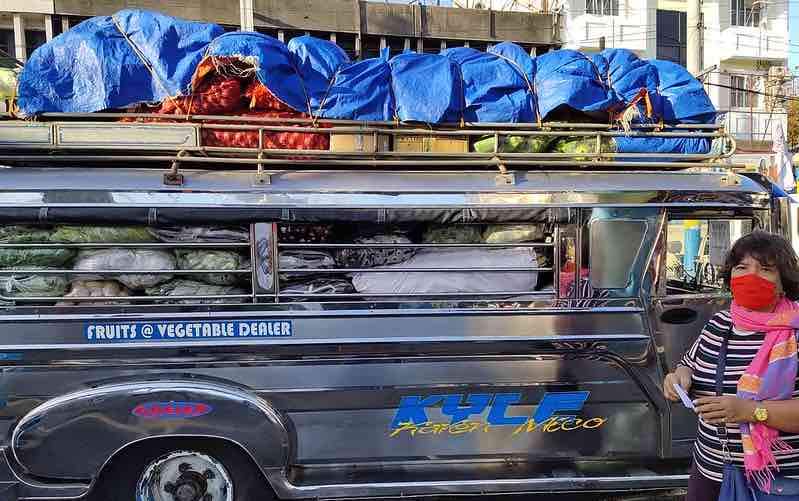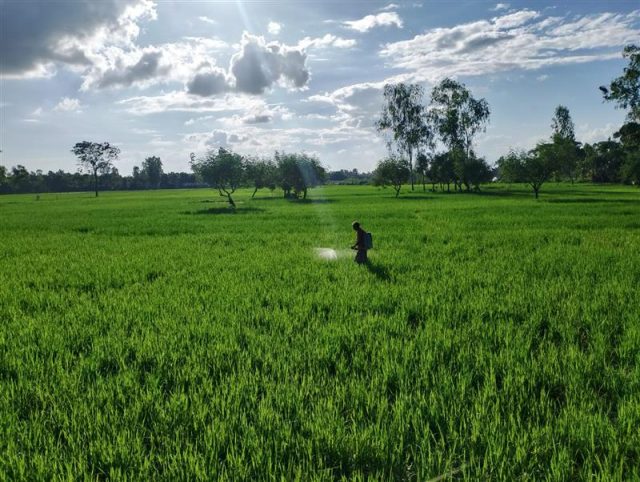COVID-19 and resilience innovations in food supply chains
- From
-
Published on
06.07.20
- Impact Area

By Thomas Reardon and Johan Swinnen
Food supply disruptions in developing countries during the COVID-19 pandemic have been varied and often severe, especially in labor-intensive segments of supply chains. Tom Reardon of Michigan State University and IFPRI’s Jo Swinnen summarize early experiences in both international and domestic supply chains across various types of firms and commodities. They review a range of innovations developed to keep supply chains running, many implemented at a surprisingly rapid pace—and make recommendations on to facilitate continued innovation to speed the recovery and ensure better food supplies post-pandemic.—John McDermott, series co-editor and Director, CGIAR Research Program on Agriculture for Nutrition and Health (A4NH).
The COVID-19 pandemic has triggered intense discussions about the vulnerability of the world’s food systems and food supply chains (FSCs) and about the roles of different types of supply chains, e.g. local vs. global, in providing food security. We know that the spread of the novel coronavirus and government-imposed lockdowns and other restrictions have had a range of impacts on FSCs, and triggered a variety of creative innovations to keep supply chains running.
To guide government policy responses going forward, and to facilitate a shift to more resilient FSCs in the long run, we need to understand several things: The role of various types of supply chains in food security; how resilient they have—or have not—been to the pandemic’s impacts; and what innovations are now emerging to improve their resilience.
Here, we distinguish between global chains (where the food or agricultural raw material is produced in one country and consumed in another) and domestic chains (where food is produced and consumed in the same country). Within domestic chains, it is useful to distinguish between those relying on small and medium enterprises (SMEs) in logistics, trade, processing, and retailing; and those dominated by large-scale enterprises, including fast food chains, supermarkets, large processors, and big logistics firms.
While there are obviously important differences across commodities and countries, available data suggest that domestic supply chains, especially those dominated by SMEs, are by far the most important for supplying food to consumers in developing countries. Rough estimates suggest that, on average for South Asia and Africa south of the Sahara, domestic chains account for between 75% and 90% of food consumed, of which the vast majority comes through SME- dominated chains and up to 20% through large scale enterprises. Global chains account roughly for 15% to 20% of food consumption in these regions, with a positive correlation between GDP and their share.1
Pandemic-related disruptions in supply chains are concentrated in their labor-intensive segments. In general, supply chains in rich countries have been more resilient because they are more capital- and knowledge-intensive. Notable exceptions are harvesting that depends on migrant labor; labor-dense processing such as in meat processing in the United States; and obviously restaurants and other food service sector firms.
Still, there are important differences among FSCs in developing countries. Global FSCs have been more resilient because trade is mostly undertaken by large enterprises in coordinated and capital-intensive supply chains that can mostly adjust to disruptions geographically and temporally, and somewhat in product composition. While there is much concern about COVID-19 affecting trade in perishables, most extra-regional trade is organized through large capital-intensive firms.2 These large trading companies can reduce risk and adjust to shocks as they are more flexible in switching global sourcing and destination regions and in diversifying and shifting stocks to manage risk—as they already do to manage risks from climate shocks (Reardon and Zilberman 2018).
Within domestic FSCs, COVID-19 and lockdowns have mixed effects. Large-scale companies are generally less labor intensive but rely more on hired labor (affected especially by lockdowns), while SMEs are more labor intensive, but use more family labor. Wholesaling and logistics operations, such as third party (3PLS) logistics firms in trucking and transport, which are very important for food transport in Africa south of the Sahara, are disrupted by mobility restrictions and wholesale market restrictions. These also affect farm input distribution in rural areas. These differences matter for processing, trade, and logistics, and also apply to the farm sector. Larger mechanized farms are less affected by pandemic restrictions, but those that depend on hired labor have felt an impact. Hired farm labor is relatively rare in Africa south of the Sahara, except for labor-intensive poultry and horticulture operations, compared to India, for example, where farms depend much more on hired labor (Reardon et al. 2020a).
Supermarkets and large processors in developing countries depend largely on SME wholesalers, but the largest companies—such as Future Group, a leading supermarket chain in India—tend to have their own logistics and procurement units. This allows them more control and coordination to maximize their sourcing in the face of constraints. SMEs have to take what they can get.
This blog post is part of a special series of analyses on the impacts of the COVID-19 pandemic on national and global food and nutrition security, poverty, and development. The blog series is edited by IFPRI director general Johan Swinnen and A4NH director John McDermott. See the full series here.
Photo Credit: Minette Rimando/ILO
![]()
Related news
-

New Genomic Discovery from ICRISAT Could Save Farmers Millions by Preventing Groundnut Sprouting Before Harvest
International Crops Research Institute for the Semi-Arid Tropics (ICRISAT)02.12.25-
Food security
-
Poverty reduction, livelihoods & jobs
Breakthrough study identifies varieties and key genes to halt sprouting before harvest in groundnut …
Read more -
-

Cultivating climate-smart rice: How specific cultivars and smarter fertilizing can cut emissions and maintain yield
International Rice Research Institute (IRRI)19.11.25-
Climate adaptation & mitigation
-
Food security
By Bushra Humaira Sadaf A team of researchers from the Bangladesh Rice Research Institute (BRRI), I…
Read more -
-

Australia partners with International Livestock Research Institute to upskill researchers from Africa and Asia
International Livestock Research Institute (ILRI)13.11.25-
Food security
-
Poverty reduction, livelihoods & jobs
Australia has joined forces with the International Livestock Research Institute (ILRI) to support th…
Read more -
